A road trip to nowhere
The title of the film, dog, shines with a sobriety that leaves the door open to multiple expectations and narrative perspectives. Who is this dog, what does he do, what will the plot turn out? Will it be a comedy? Of a tragedy? From a dramatic comedy? From a buddy movie? From a road movie? This initial ambiguity is like the footagewho himself seems not to really know in which register to register, nor, more simply, where exactly to lead his story.
dog however, responds to a very simple starting postulate. From the first quarter of an hour, the spectator knows everything there is to know about Jackson Briggsthe protagonist played by Channing Tatum, and guess quite easily a good part of the story upstream. For example, there is no doubt about the overall evolution of the relationship between the ranger and the dog: according to a well-known narrative scheme, the two characters, initially hostile to each other, will be led to tame each other and come out stronger from this experience. Admittedly, this is not necessarily a very subtle narrative choice on the part of the two directors, but after all, not all films claim to want to be.
Not really man’s best friend, the beast
In a certain way, being able to foresee the main lines of the three acts of a film can even, sometimes, prove to be judicious, and leave the spectator the leisure to concentrate on the multiple adventures that will be brought to meet the character and his canine sidekick. But then again, it seems that dog don’t really know which leg to dance on. Too few biases are thus committed by Carolin’s screenplay, and the few times the story finally seems to engage frankly in a narrative, or tonal turn, the footage suddenly takes a different direction.
Beyond destabilizing the spectator, and weakening the very experience of viewing, this lack of identity from which the film suffers unfortunately enjoins it to collect pictures to give some color to his plot. The scenario is therefore conceived according to a series of episodic encounters which follow each other flatly, and clearly have no other purpose than that of delaying the arrival of Briggs at the cemetery where his former comrade in arms is to be buried.
In fact, not knowing which film dog claims to be, it’s hard to know how to watch the footagehow to interpret certain sequences, certain speeches (one wonders, for example, what to take away from the segment where the dog suddenly attacks an Arab doctor, on the pretext that her traditional dress reminds her of the Taliban against whom she fought beaten in the Middle East), or even, how to really apprehend this improbable duo.
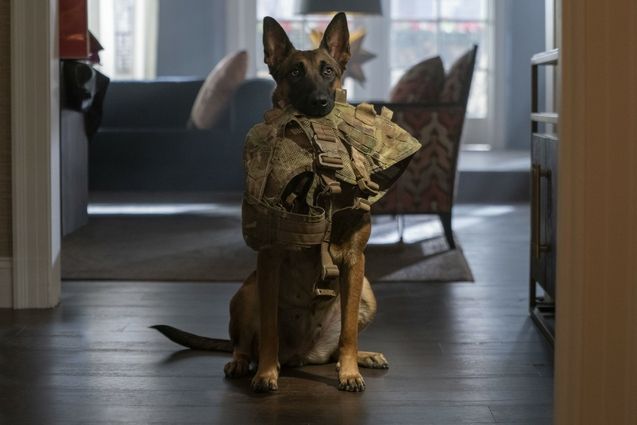 A pooch that will appeal to conservatives and liberals alike
A pooch that will appeal to conservatives and liberals alike
who’s a good girl?
The film nonetheless makes up for its weaknesses quite well, thanks in particular to the infallible charisma of its leading actor, and the obvious chemistry that the latter shares with the three canines who play Lulu. True to form, Channing Tatum lends his features to a bunch of scatterbrained and funny muscles in spite of himself who nevertheless manages to touch the viewer by means of a few scenes specifically designed to tug on his heartstrings.
The performance is all in all not very far from some of his previous roles, such as those of 21 Jump Street Where White House Down. The actor is aware of his strengths and limitations, and this first time behind the camera precisely allows him to give pride of place to his abilities, even if it means sometimes bordering on megalomania. However, it is not a question of throwing stones at him: in an almost alone on stage – since the other main character does not really have the most developed lexical field – Tatum manages to deliver his monologue (as well as a hilarious interpretation from lion died tonight) with an address that needs to be recognized.
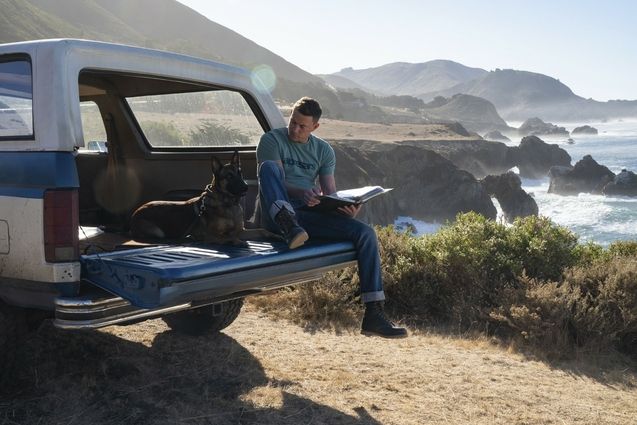 Post card
Post card
His interactions with the dog are all the more appreciable since the latter is not excessively anthropomorphized, as can sometimes be the case with films featuring canine protagonists. In one of the rare narrative and cinematographic biases of the film, dog seems on the contrary to take great care of not to alienate Lulu’s animality, and therefore does not lend her too many humanized reactions, whether through training, the script, or the editing. By this well-established distinction between man and animal, the film does not need to focus more on what separates the two characters, and therefore easily highlights what will eventually bring them together.
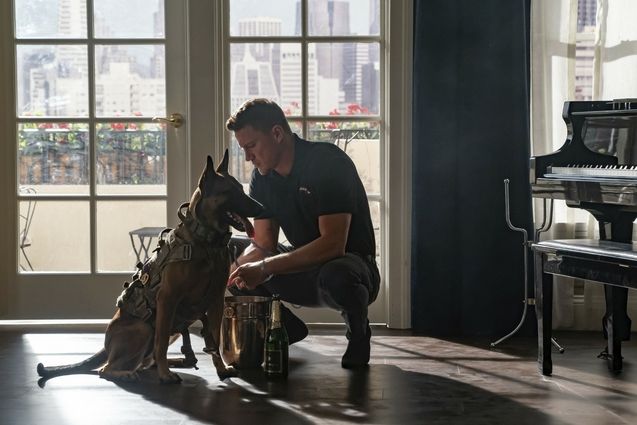 Best co-star.
Best co-star.
a movie to drive crazy
Soon enough, parallels are brought to light between Briggs and Lulu. Both are former rangers stripped of their duties, and subsequently stripped of their presupposed raison d’être.. On the one hand, the character of Tatum is forced to get used somehow to the prospect of a penniless civilian life with no other prospect for the future than that of serving sandwiches to unpleasant customers. On the other, the dog, who has been trained since birth to follow the soldiers in the field and serve as a reinforcement jaw, unknowingly awaits the euthanasia which is inevitably reserved for her after the funeral of her late son. master.
Devoid of value in the eyes of the military body, and by extension, of landmarks, the two characters therefore accuse the same evil. Nevertheless, the heavy psychological sequelae suffered by man and canine are not necessarily subject to the same treatment. Indeed, where the causes and consequences of Lulu’s post-traumatic stress are amply developed, those of Briggs remain much more vague. Should we conceive of the ins and outs of the dog’s disorder as a metaphor in order to define that of the man, or is it rather a question of underlining the human superiority, and more specifically, that of the soldiers, to endure all the ailments?
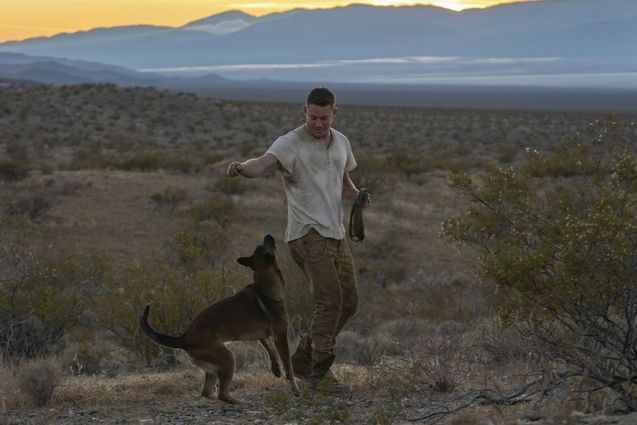 Tatum and doggie
Tatum and doggie
The distinction is unfortunate, especially for a film intended to address the vagaries of post-traumatic stress from which soldiers regularly suffer. In a way, the way Carolin’s screenplay fails to properly explore the reasons for Briggs’ disorder is quite representative of what the screenwriter and Tatum seemed to want to expose initially. However, if the footage does not respond to a pro-army, or even pro-war discourse, dog could on the other hand be considered a pro-soldier film, with all the gray and morally ambiguous areas that implies.
However, this inclination quickly fades into the background, until it becomes a backdrop, at worst unpleasant, at best completely useless. Thus, the film never puts so much emphasis on the motivations that drive the character of Tatum to so ardently desire to put on the uniform again (but here again, we recall that dog sorely lacking in stakes and direction), and relies instead on the humorous potential of the situation shared by Briggs and Lulu. The unambiguous realization of the Tatum-Carolin duo thus gives rise to multiple visual gags which, on their own, may be worth the detour.
The result is a strange, if not indescribable experience, which, despite its aftertaste of uncertainty, proves to be pleasant enough to linger over. The end full of good feelings was of course to be expected, but in spite of everything, it will snatch a little tear from the most seasoned spectator, and maybe deep down, you shouldn’t necessarily expect much more.
Dog is available on Amazon Prime Video since July 22, 2022 in France
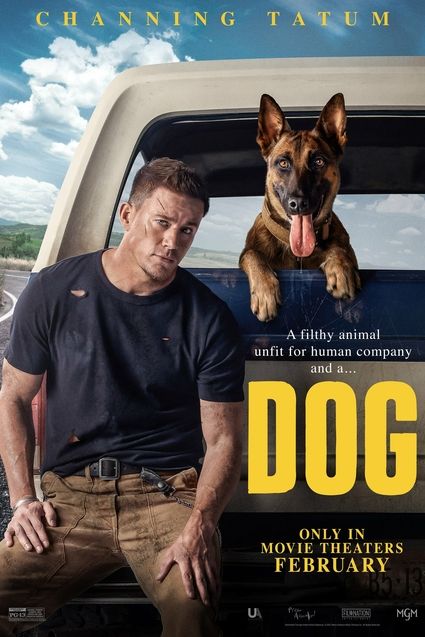
.